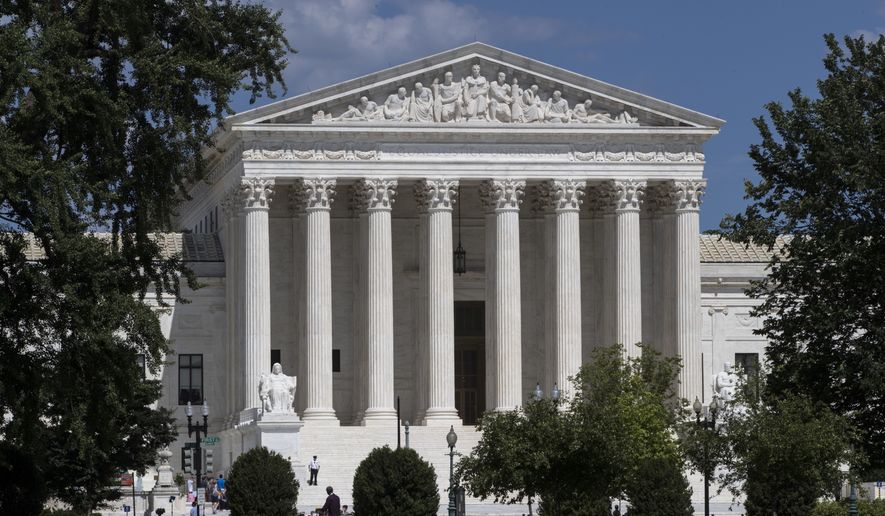OPINION:
The U.S. Supreme Court hears oral arguments Wednesday on proper federal court review of a dramatic overreach of federal environmental permitting.
The issue in question involves the Environmental Protection Agency’s (EPA) 2015 decision to expand dramatically the regulatory definition of “waters of the U.S.” in the 1972 Clean Water Act. The EPA’s decision significantly expanded federal involvement over the geographic reach of environmental permitting and threw the federal permitting process into profound uncertainty.
The EPA’s rule preparation took four years, but the response to its 2015 announcement was swift. Thirty-one states and multiple business groups filed or joined litigation to overturn the rule. In October 2015, the 6th U.S. Circuit Court of Appeals issued a nationwide stay on the new rule, meaning that it has not gone into effect. Most recently, the Trump administration has proposed to rescind the rule and intends to issue a much more restrictive rule in the future.
The Supreme Court will consider whether the 6th Circuit even has jurisdiction to review the EPA’s rule based on rather arcane language in the Clean Water Act. A decision from the high court concluding that the 6th Circuit does not have jurisdiction could significantly complicate the Trump administration’s efforts to accelerate permitting for energy and infrastructure projects by reopening pending suits in a number of federal trial courts, possibly leading to inconsistent interpretations of Clean Water Act jurisdiction.
There are many disturbing aspects of the EPA’s 2015 rule. An important point involves how the EPA was highly dismissive of expertise provided by the Army Corps of Engineers. In a series of memos drafted prior to the EPA’s 2015 announcement, the Corps went on record as disagreeing strongly with EPA’s interpretations, and even the EPA’s basic data, which the Corps did not have a chance to review and analyze.
The Corps of Engineers also asked that its name be stricken from the final rule. This ultimately did not happen, but to have the Corps take a public position like this is, in our experience, highly unusual.
The court is unlikely to issue a decision for several months, but whatever the outcome, the Trump administration’s effort to replace these rules will not be fast or easy. The administration will have to follow the same lengthy process provided for in the Administrative Procedure Act that the Obama EPA went through in 2015. That process included compiling a record consisting of thousands of pages, including a 400-page technical support document and a peer-reviewed scientific study on “connectivity ” of streams.
Moreover, the EPA and the Army Corps will also have to establish why the scientific and legal findings and conclusions in the 2015 rule are not consistent with previous Supreme Court interpretations of the Clean Water Act. In a 2006 Clean Water Act ruling, the court’s majority included separate and differing opinions from Justices Antonin Scalia and Anthony Kennedy. Justice Scalia supported a narrow “perennial flow” definition for streams, tributaries and wetlands while Justice Kennedy offered a looser definition involving waters that simply had “significant nexus” with major bodies.
In order to support a rule based on Justice Scalia’s opinion, the EPA and the Army Corps will have to develop a legal and factual rationale for why Justice Scalia’s opinion is correct. That will be difficult because no federal court has ever held that Justice Scalia’s standard is the sole basis for establishing Clean Water Act jurisdiction.
Further, any final “less expansive” rule must balance respect for federalism and property rights with the Clean Water Act’s water-quality provisions.
For businesses wondering about the economic impact of the various agency and court timelines, the administration’s efforts to reinstate the pre-2015 rule status quo will provide some short-term permitting clarity. But even if the EPA is able to rush out a new rule defining U.S. waters, that will not mean that the permit process will become easier. Permit applicants will still have to comply with federal and state regulatory requirements involving, for example, impacts to wetlands and endangered species, in negotiating Clean Water Act Section 404 permits.
• Bruce Berwick, a retired U.S. Army brigadier general, is a former commander of the Army Corps of Engineers’ Great Lakes and Ohio River Division. Larry Liebesman spent 11 years as an environmental litigator for the U.S. Justice Department. Both work for Dawson & Associates in Washington, D.C.




Please read our comment policy before commenting.